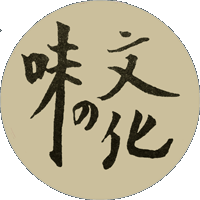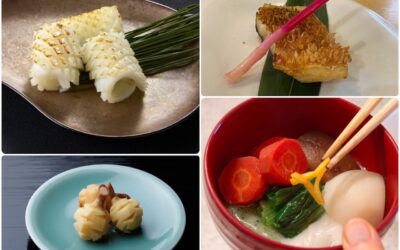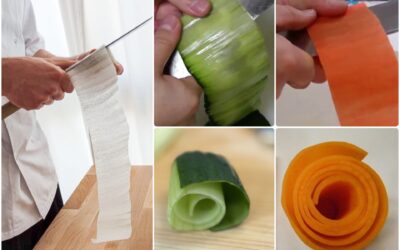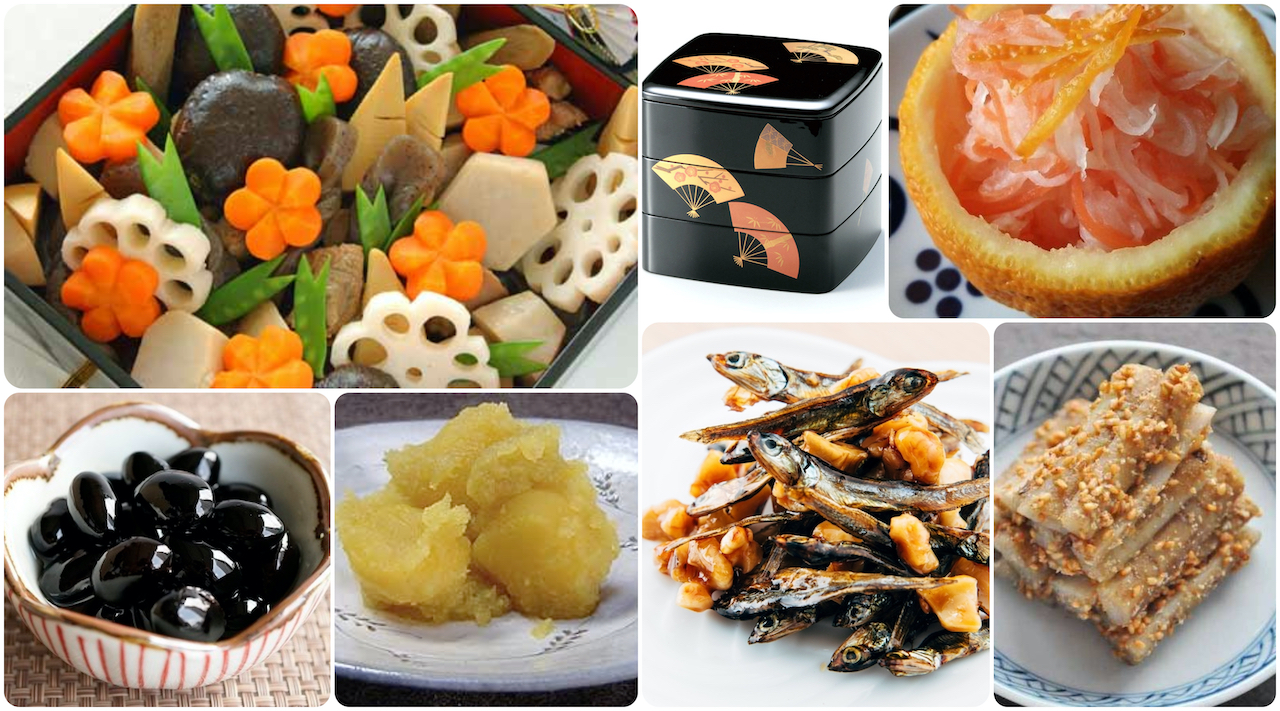
PROJECT Osechi-Making
December is a busy time… The Japanese aptly call the final month of the year shiwasu, written with calligraphy for “professor” 師 and “running about in a tizzy” 走. In Japan shiwasu is a time of frenzied activity that culminates with Oshogatsu (New Years) when families gather to celebrate and share OSECHI (New Year holiday food), packed into a multi-tiered lacquer box called a jūbako.
Most of the food can be made far ahead and keeps well for days, even weeks. I’ve chosen six items that require varying degrees of time and skill to prepare. Recipes for all are stored on this website. Choose one or more to make in YOUR kitchen for tthe holidays, or anytime.
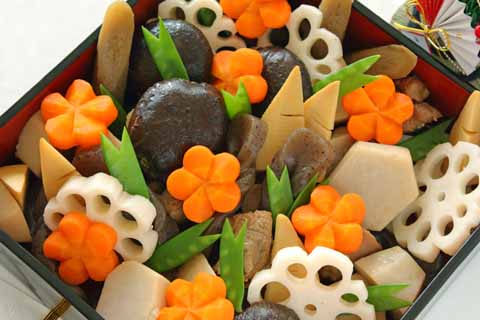
Nishime (soy-simmered vegetables)
Nishimé, a simmered assortment traditionally enjoyed during Oshogatsu, Japan’s New Year holiday season, can be made days ahead if kept at cool room temperature.
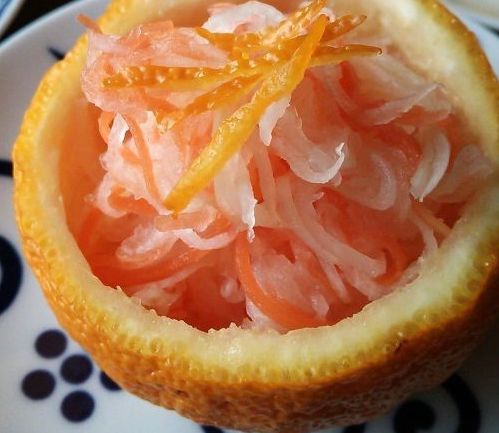
Kohaku Namasu (red & white celebration salad)
RED 紅 and WHITE 白 are the colors of felicity; foods with these colors are served on happy occasions. Here crimson carrots and snowy white daikon appear in this Celebration Salad with aromatic yuzu citron.
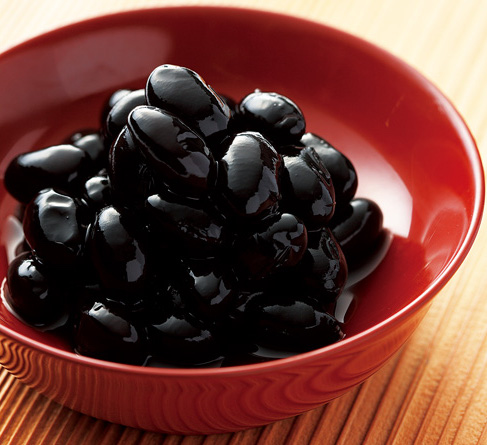
Kuro Mame (sugar-stewed black beans)
Word play adds a nuance of flavor to osechi items like this “black” (kuro) “bean” (mame) dish. Written with different calligraphy shifts the meaning to “difficult work” (kuro) and “earnestness” (mame). Working with earnest determination in the year to come will bring sweet rewards.
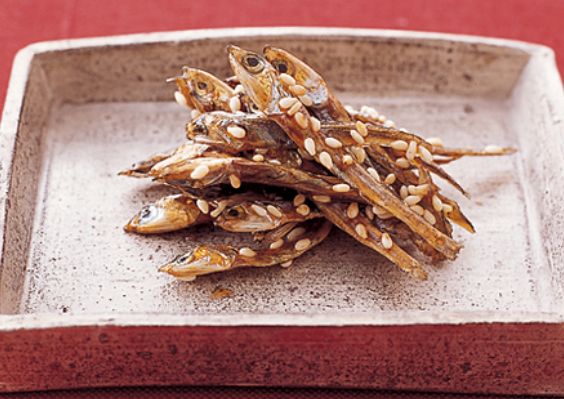
Tazukuri (fish brittle)
Written with calligraphy meaning “tilled fields” the fish brittle is a New Year delicacy that symbolizes fertility and abundance. Tazukuri are nibbled on New Year’s Day (best served with a well-chilled, dry saké) hoping for a sweet, prosperous New Year.
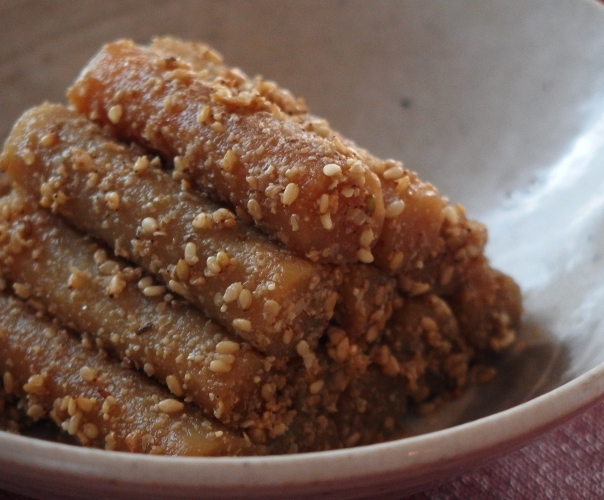
Tataki Gobo (Smashed Burdock )
This dish takes its rather alarming name from the thwacking sound emitted when burdock root is tenderized with a blunt, heavy tool. In the traditional Japanese kitchen, this would have been a surikogi, the wooden pestle used in conjunction with a ceramic suribachi (grooved mortar) to make the sesame sauce.
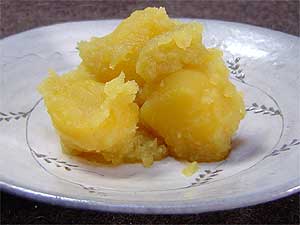
Kuri Kinton (chestnuts in sweet potato paste)
A New Year’s treat throughout Japan, chestnuts simmered in sugar syrup (their golden color enhanced by kuchinashi no mi dried gardenia pods) are tossed with mashed sweet potato (also color-enhanced with gardenia pods).
Visit my Kitchen Culture blog to learn about KUMQUATS and download recipes.
Read my December 2023 newsletter.
